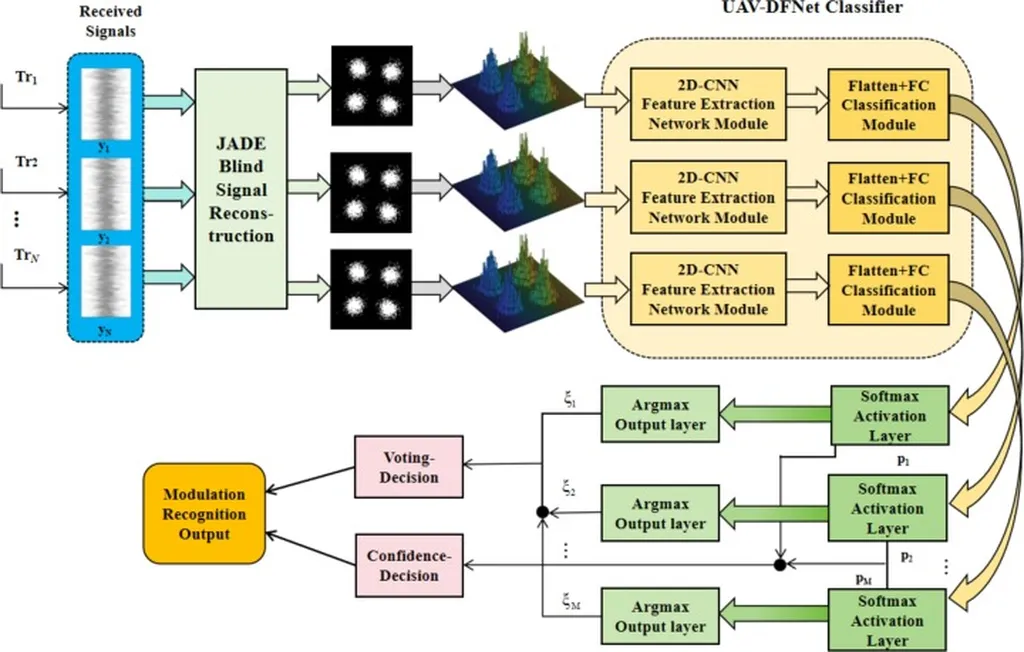Researchers from the School of Artificial Intelligence and Automation at Huazhong University of Science and Technology have developed a novel approach to automatic modulation classification (AMC) that promises to enhance wireless communication systems in both military and civilian contexts. The team, led by Haoyue Tan, Yu Li, Zhenxi Zhang, Xiaoran Shi, and Feng Zhou, has introduced ModFus-DM, a groundbreaking unsupervised AMC framework that leverages the generative power of diffusion models to improve modulation representation learning.
Automatic modulation classification is crucial for identifying the type of modulation used in a received signal, enabling effective communication and interference management. Traditional deep learning-based AMC methods often face significant challenges, including the need for large amounts of labeled signals, difficulties with non-fixed signal lengths, distribution shifts, and limited labeled signals. To tackle these issues, the researchers proposed ModFus-DM, which utilizes the generative capacity of diffusion models to create robust modulation representations.
At the heart of ModFus-DM is the modulated signal diffusion generation model (MSDGM), designed to implicitly capture structural and semantic information through a progressive denoising process. This innovative approach allows the model to learn and represent the complexities of modulated signals more effectively. Additionally, the team developed the diffusion-aware feature fusion (DAFFus) module, which adaptively aggregates multi-scale diffusion features to enhance the discriminative representation of the signals.
The effectiveness of ModFus-DM was thoroughly tested on multiple datasets, including RML2016.10A, RML2016.10B, RML2018.01A, and RML2022. The results were impressive, with ModFus-DM significantly outperforming existing methods in various challenging scenarios. These scenarios included limited-label settings, distribution shifts, variable-length signal recognition, and channel fading situations. Notably, ModFus-DM achieved over 88.27% accuracy in 24-type recognition tasks at a signal-to-noise ratio (SNR) of 12 decibels or higher, using only 10 labeled signals per type.
The practical applications of this research are vast, particularly in the defence and security sector. Enhanced AMC capabilities can improve the reliability and security of military communications, enabling better detection and classification of signals in complex and dynamic environments. This can be particularly useful in electronic warfare, where the ability to quickly and accurately identify and respond to different types of modulated signals is crucial. Furthermore, the unsupervised nature of ModFus-DM reduces the need for extensive labeled data, making it a more practical and scalable solution for real-world applications.
This article is based on research available at arXiv.

